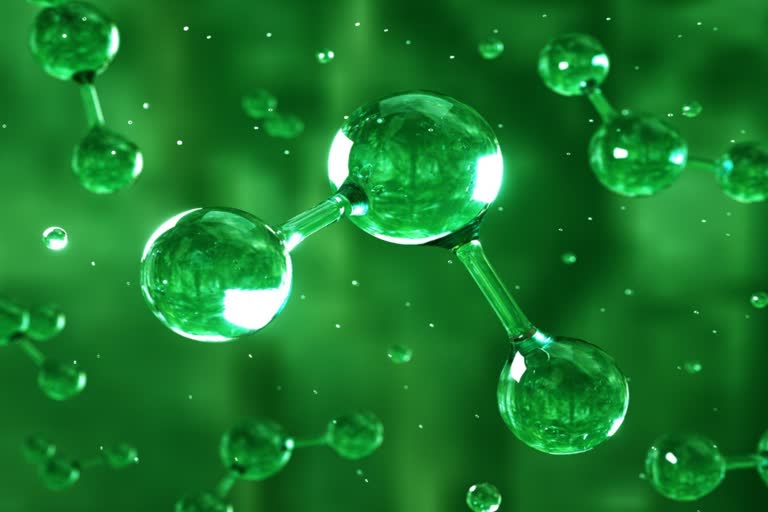New Delhi: Hydrogen's potency as a clean fuel could be limited by a chemical reaction, potentially leading to accumulation of methane in the lower atmosphere, according to a new research. This is because hydrogen gas easily reacts in the atmosphere with the same molecule primarily responsible for breaking down methane, a potent greenhouse gas.
If hydrogen emissions exceed a certain threshold, that shared reaction will likely lead to methane accumulating in the atmosphere - with decades-long climate consequences, the research from Princeton University, US, and the National Oceanic and Atmospheric Association said. "Hydrogen is theoretically the fuel of the future," said Matteo Bertagni, first author of the study, Princeton University.
"In practice, though, it poses many environmental and technological concerns that still need to be addressed," said Bertagni. The researchers modelled the effect of hydrogen emissions on atmospheric methane, outlining their findings in the journal Nature Communications.
They found that despite replacing fossil fuel usage, above a certain threshold, a leaky hydrogen economy could cause near-term environmental harm by increasing the amount of methane in the atmosphere. The risk for harm is compounded for hydrogen production methods using methane as an input, highlighting the critical need to manage and minimize emissions from hydrogen production, the study said.
"We have a lot to learn about the consequences of using hydrogen, so the switch to hydrogen, a seemingly clean fuel, doesn't create new environmental challenges, said Amilcare Porporato, principal investigator and professor, Princeton University. The problem, the study said, boils down to one small, difficult-to-measure molecule known as the hydroxyl radical (OH).
Often dubbed "the detergent of the troposphere," OH plays a critical role in eliminating greenhouse gases such as methane and ozone from the atmosphere. The hydroxyl radical also reacts with hydrogen gas in the atmosphere and, since, a limited amount of OH is generated each day, any spike in hydrogen emissions means that more OH would be used to break down hydrogen, leaving less OH available to break down methane.
Also read: Smoke particles from wildfires can erode ozone layer: MIT study
As a consequence, methane would stay longer in the atmosphere, extending its warming impacts, the study said. According to Bertagni, the effects of a hydrogen spike that might occur as government incentives for hydrogen production expand could have decades-long climate consequences for the planet.
"If you emit some hydrogen into the atmosphere now, it will lead to a progressive buildup of methane in the following years," Bertagni said. "Even though hydrogen only has a lifespan of around two years in the atmosphere, you'll still have the methane feedback from that hydrogen 30 years from now," Bertagni said.
In the study, the researchers identified the tipping point at which hydrogen emissions would lead to an increase in atmospheric methane and established targets for managing hydrogen emissions. "It's imperative that we are proactive in establishing thresholds for hydrogen emissions, so that they can be used to inform the design and implementation of future hydrogen infrastructure," said Porporato.
For hydrogen referred to as green hydrogen, which is produced by splitting water into hydrogen and oxygen using electricity from renewable sources, Bertagni said that the critical threshold for hydrogen emissions sits at around 9 per cent. This means that if more than 9 per cent of the green hydrogen produced leaks into the atmosphere due to any reason, atmospheric methane would increase over the next few decades, canceling out some of the climate benefits of switching away from fossil fuels, the study said.
For blue hydrogen, which refers to hydrogen produced via methane reforming with subsequent carbon capture and storage, the threshold for emissions is even lower. Because methane itself is the primary input for the process of methane reforming, blue hydrogen producers have to consider direct methane leakage in addition to hydrogen leakage.
For example, the researchers found that even with a methane leakage rate as low as 0.5 per cent, hydrogen leakages would have to be kept under around 4.5 per cent to avoid increasing atmospheric methane concentrations. "If you have just a small amount of methane leakage and a bit of hydrogen leakage, then the blue hydrogen that you produce really might not be much better than using fossil fuels, at least for the next 20 to 30 years," Bertagni said. "Managing leakage rates of hydrogen and methane will be critical," Bertagni said. (PTI)



